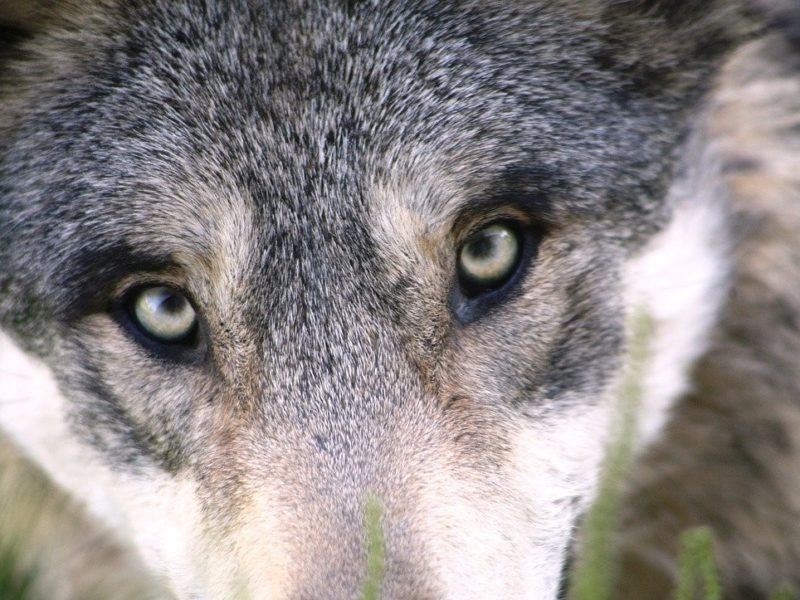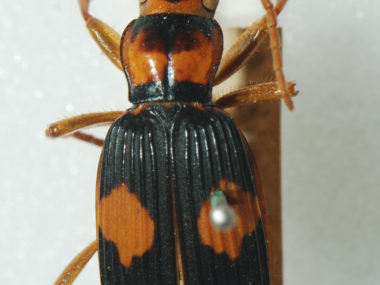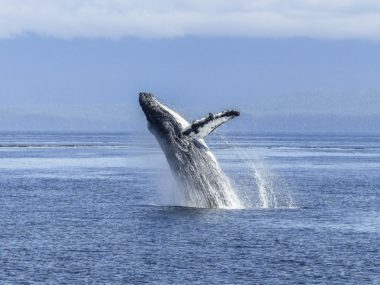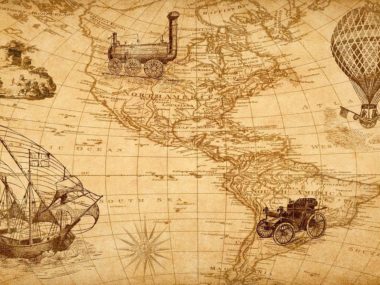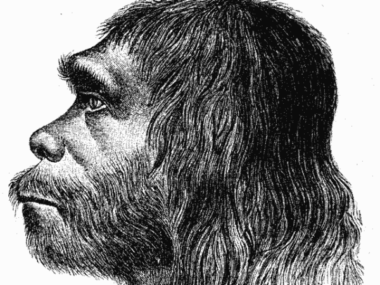“According to naturalism, all living organisms are related by the process of evolution, so no true discontinuity should exist.”
Deep discontinuity is not the only sort of discontinuity that has been discovered. In fact, there seems to be a spectrum of perfection of discontinuity in the biological world, with the deep discontinuity occupying only one position in that spectrum. What follows is a summary of that spectrum as it is now recognized and understood, beginning with the shallowest discontinuity and moving through to the deepest.
This article is an excerpt from Devotional Biology: Learning to Worship the Creator of Organisms, Ch. 4.3, pgs. 90-95. The views expressed reflect those of the authors mentioned, and not necessarily those of New Creation.
Extremely Shallow Discontinuity Within Species
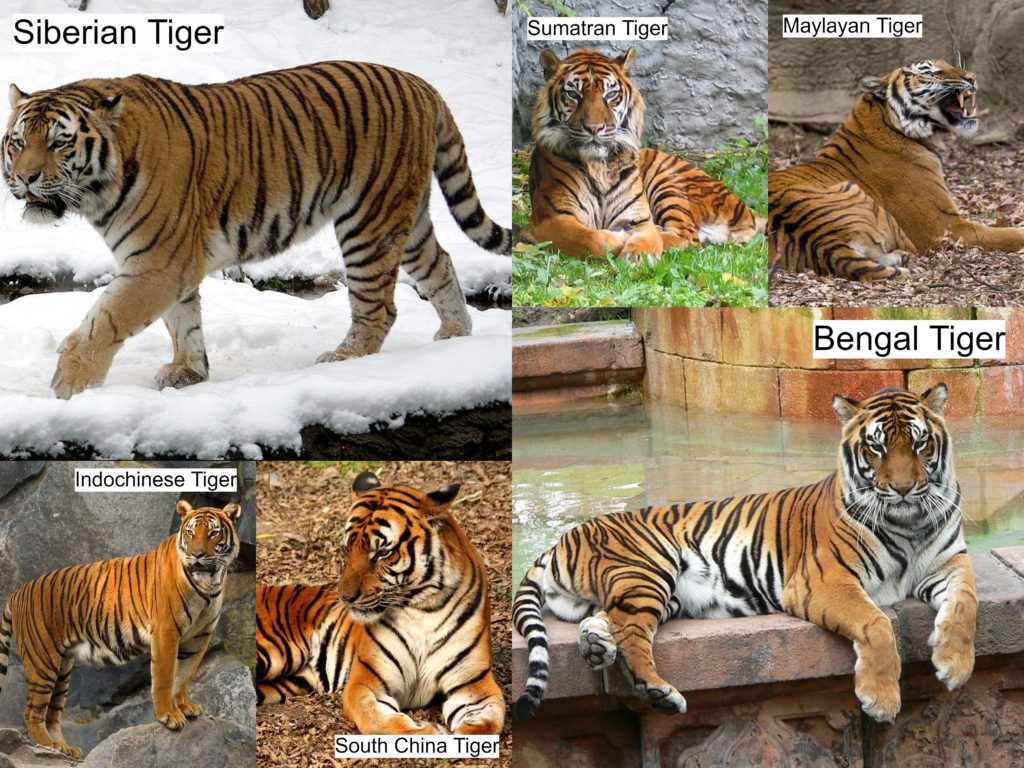
A species can be described as the smallest recognizable group of similar organisms that persists naturally1 by the production of similar offspring. Within a species the dominant pattern is the strong similarity found among individuals of the species AND between parents and their offspring. The young in these species mature to look just as similar to one another and their parents as their parents appear to each another. In species where mating occurs, each member of the species seems readily able to mate with any other member of the species. So, in both mating and similarity, there appears to be no discontinuity at all within a species.
However, individuals in the species have distinct bodies. Furthermore, closer examination indicates that individuals can be distinguished by differences in DNA, behavior, personality, and/or body form. Since this discontinuity is accompanied by no apparent barrier to mating, we describe as extremely shallow that discontinuity found between individuals within a species. Asexual organisms, like bacteria, seem to show the shallowest of within-species discontinuity. The young of asexual organisms are clones of their parents and appear to be nearly identical—even as far as having identical DNA.
Very Shallow Discontinuity Between Varieties, Cultivars, and Breeds
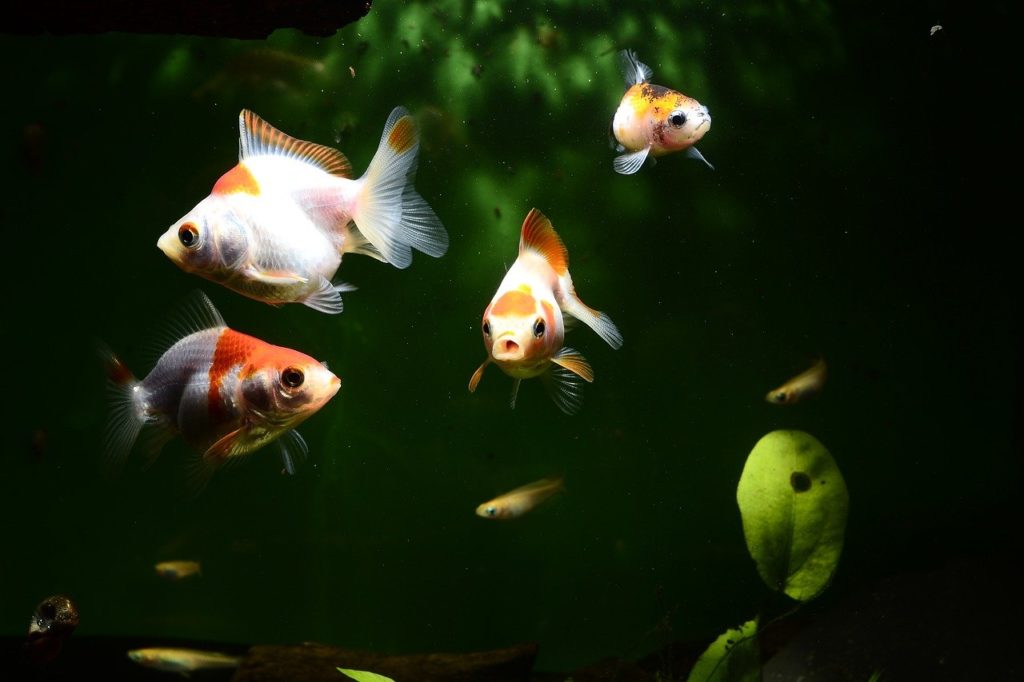
Breeding2 is the human activity of controlling what sorts of organisms are produced in the next generation by selecting which parents are mated (or ‘crossed’). Humans have been breeding plants and animals for thousands of years—most likely from the time of the Garden of Eden. Breeding has generated many thousands of organisms that have an appearance different from any organisms found among the natural or wild species of the world. The organisms produced by this breeding that have more distinctive, recognizable forms are even given their own names.
Thousands of animals have been named as breeds, and thousands of plants have been named as varieties or cultivars. For example, there is the Beagle dog breed, Canis familiaris ‘Beagle’, the Aspiran grape variety, Vitus vinifera var. Aspiran, and the Jonathan apple cultivar, Malus domestica ‘Jonathan’. Such varieties, cultivars, and breeds can be just as different from one another as species are, but they are not persistent. When allowed to mate as they wish, they mate just as readily with their own as they do with other varieties, cultivars, or breeds of the same species, so the gaps between and among them are readily bridged by mating. Because of the unbridled breeding in the natural world, varieties, cultivars, and breeds quickly disappear when humans are not controlling the breeding.
Consequently, since mating between varieties, cultivars, and breeds is as free as it is between other individuals of the same species, but there is more difference in appearance, varieties, cultivars, and breeds are said to be separated by very shallow discontinuity (rather than extremely shallow discontinuity between individuals in natural species populations).
Shallow Discontinuity Between Species
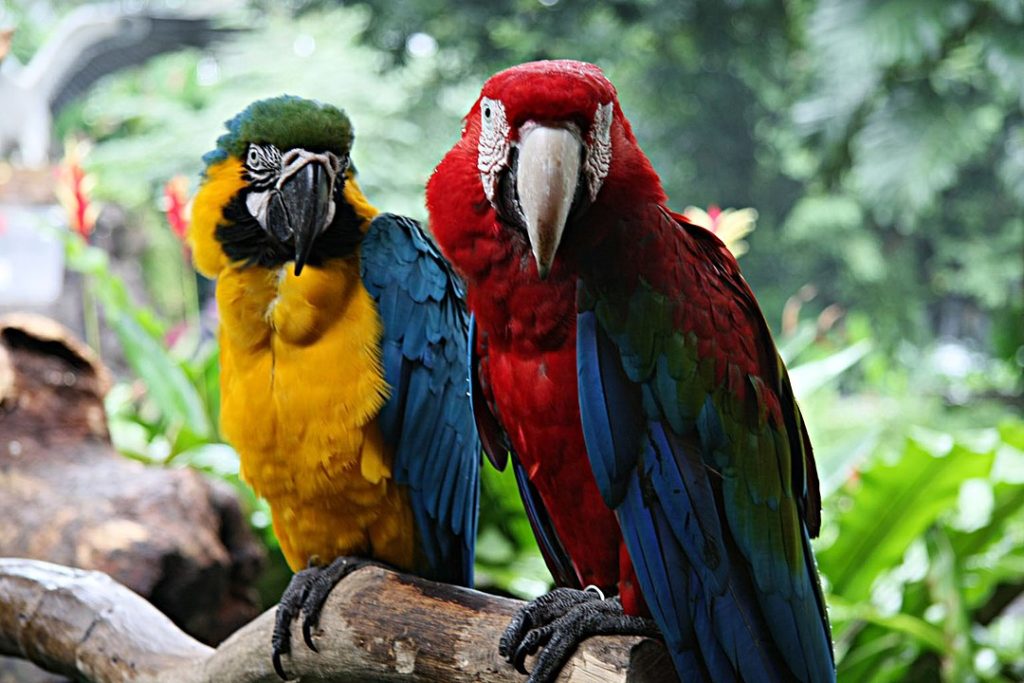
Image Credit: Desmond Peh – originally posted to Flickr as Jurong Bird Park, CC BY 2.0, https://commons.wikimedia.org/w/index.php?curid=4877623
The smallest recognizable group of similar organisms which is surrounded by some sort of persistent discontinuity is the species. Unlike varieties, cultivars, and breeds, species in the wild produce offspring that look the way their parents did in the previous generation. This allows species to remain unchanged for successive generations. In this way, species we first recognized in our childhood remain recognizable throughout our entire life.
Species have even persisted throughout the history of human culture (i.e. throughout most of the period following the Flood). Aside from species that have gone extinct, descriptions of species in ancient cultures and depictions of them in ancient art remain identifiable and identical with species we recognize in the present. Even in the fossil record, species typically remain recognizable and unchanged from the oldest fossil through to the present (or to the youngest fossil, in the case of extinct species)—something called species stasis3.
The discontinuity surrounding species is further confirmed by the abrupt appearance of species in the fossil record4. This refers to the fact that for a vast percentage (>99%) of species in the fossil record, the oldest fossils are not preceded by a ‘population’ of stratomorphic intermediates that would connect that species with any other5. Considering all these observations at the same time—the recognizability of species, the persistence and stasis of living and fossil species, and the abrupt appearance of species in the fossil record—the case for discontinuity surrounding species seems rather strong.
However, there is also evidence that the gaps among and between species are crossable. First, among some pairs of species that live in adjacent regions, the boundary areas show a continuous transition between the two species (a hybrid zone). In many of these hybrid zones every conceivable intermediate can be seen between the species on either side of the hybrid zone. Second, among some pairs of species at different levels in the fossil record, the rock layers between the two species contain ‘populations’ of stratomorphic intermediates that show a continuous transition between the species below and the species above. Although fewer than 1% of all species show these zones of transition—both in the fossil record and in the living world—they still suggest that the discontinuity between species is crossable.
A third line of evidence is inter-specific hybridization. This happens when members of two different species, such as a grizzly bear and a polar bear, mate and have young. Typically, somewhere around three quarters of the species in any given biological family can not only be mated but can also produce healthy offspring that can in turn produce offspring of their own. In families with many species, an astonishing number of inter-specific hybrids can be produced. For example, since 1940, at least 50,000 inter-specific hybrid orchid species6 have been produced from an estimated 25,000 natural orchid species. This ability to hybridize suggests that at least within families it is possible to overcome the discontinuity that seems to exist between species.
On the one hand, the discontinuity between species is real, and much greater than the discontinuity between individuals within the species. On the other hand, there is considerable evidence that the gap between species can be crossed. Therefore, the discontinuity between species should be described as a shallow discontinuity.
Semi-Deep Discontinuity Between Genera
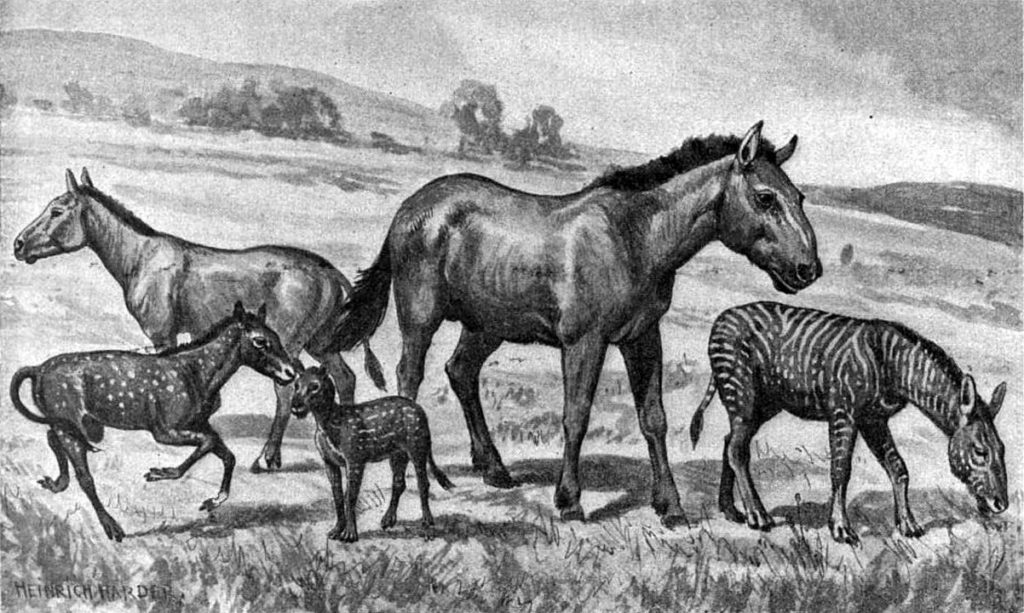
Biologists group species together into larger groups known as ‘genera’ (sing. genus). Genera seem to be surrounded by discontinuities that are deeper than those surrounding species. First of all, genera are more readily distinguishable than species, suggesting the gap between genera is wider than the gap between species. Secondly, the hybrid zones and ‘populations’ of stratomorphic intermediates occasionally found between species are not found between living or fossil genera.
At the same time, there is evidence that the discontinuities between genera can be crossed—though not as commonly as the discontinuities between species. For instance, some genera have been successfully crossed with other genera. Examples of such inter-generic hybrids include the some of the most popular showy orchids (resulting from the cross of three or more different orchid genera7) and the ‘cama’ (a cross between a camel and a llama). Furthermore, although continuous transitions between genera are absent in the fossil record, a few sets of genera are found in series or sequences analogous to footprints in a trackway through time (for example, horse genera through Tertiary and Quaternary rocks).
Consequently, the discontinuity between genera is deeper than the discontinuity between species, but still bridgeable. We might then describe the discontinuity between genera as semi-deep discontinuity.
Deep Discontinuity
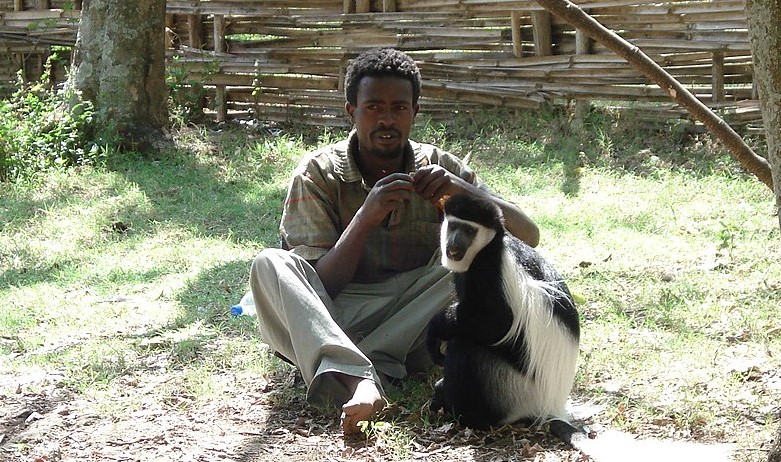
Image Credit: By Joe Castleman (Gyrofrog) – Own work, CC BY-SA 3.0, https://commons.wikimedia.org/w/index.php?curid=9057324
Holobaramins are the smallest recognizable groups of similar organisms completely surrounded by large, apparently non-traversable gaps (i.e. separated by deep discontinuity). Holobaramins are identified as groups of similar organisms surrounded by a substantial gap of form from all other organisms which lacks any evidence of crossability. In other words, no hybrids or hybrid zones are known between living members of different holobaramins, no ‘populations’ of stratomorphic intermediates are known between different fossil holobaramins, and no sequences of fossil holobaramins are known. Baraminology’s identification of a number of holobaramins suggests biblical ‘kinds’ are real. Deep discontinuity seems to divide life into several thousand baramins.
Deeper Discontinuity in Higher Groups
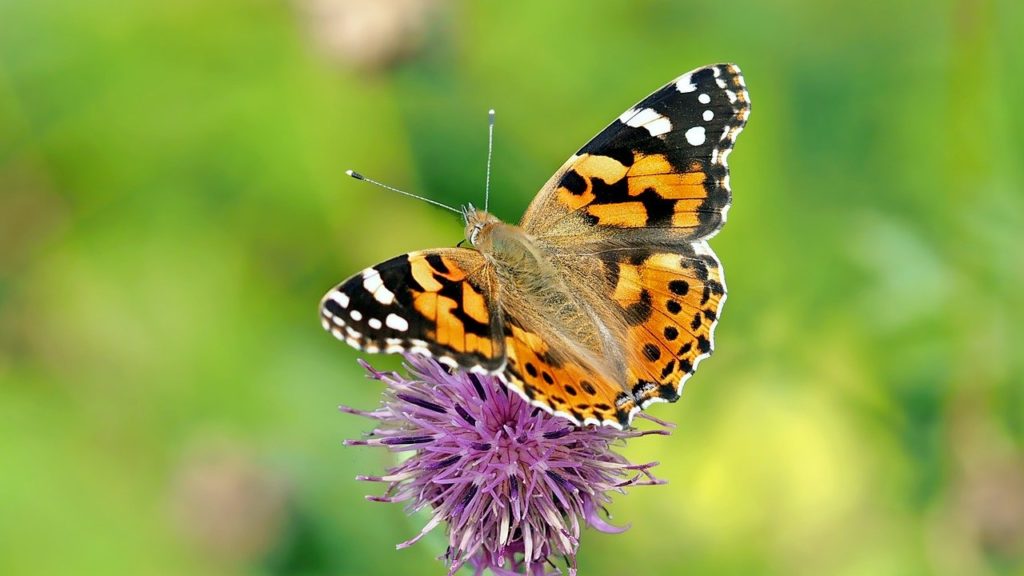
Careful baraminology studies are also confirming what has been suspected intuitively by biologists for a very long time—that the size of discontinuities between groups gets larger with larger, more inclusive, groups of classification. Discontinuities between genera tend to be smaller than the discontinuities between families, discontinuities between families tend to be smaller than the discontinuities between orders, discontinuities between classes are even larger, discontinuities between phyla are larger still, and discontinuities between kingdoms are even larger than those between phyla. In other words, discontinuity becomes deeper with larger and larger (more and more inclusive) groups of organisms. This pattern of discontinuity is not only true for living organisms; it also seems to characterize the fossil record. Every biological group (genera, families, orders, etc.) remains distinct and unchanging in the fossil record, and the size of the discontinuity between fossil groups tends to increase with more and more inclusive groupings. Discontinuity in both living and fossil groups gets deeper when more and more inclusive groups of organisms are considered.
Extremely Deep Discontinuity Surrounding Life
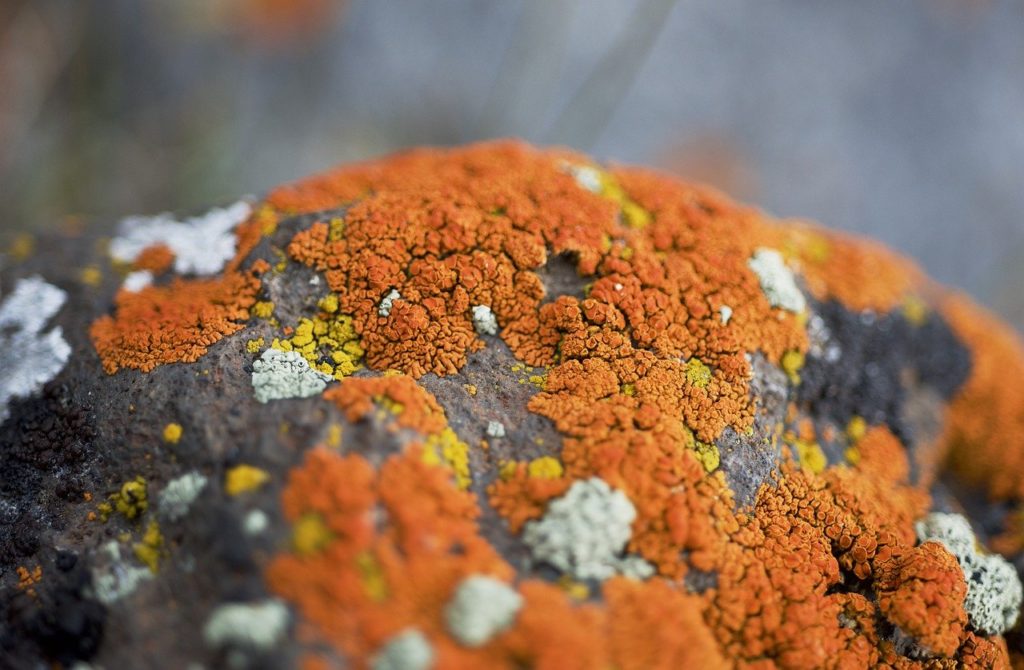
The very deepest discontinuity in biology seems to separate organisms from everything else. As full as the spectrum of perfection of life is—from viruses, bacteria, algae, plants, animals, and man—there still seems to be an unbridgeable gap between the non-living creation and biological life. Looked at in one way, viruses seem to blur the line between non-life and biological life. Yet they have to use cells of biologically living organisms to perform any of the traditionally understood characteristics of life (growth, reproduction, metabolism, etc.).
Viruses may actually be better described as extensions, or tools, or external organs of biological living things, rather than living things themselves. This leaves a substantial gap between the non-living world and biological life. First there is a gap in complexity. Even the simplest biological organisms are much more complex than the most complex of non-living things. Secondly, the non-living world on its own does not seem capable of generating even the simplest of living things. There are no known examples of any biologically living thing arising naturally from non-living things. In fact, the non-living world does not even seem capable of producing the biological molecules (the macromolecules) that make up organisms, such as RNA, DNA, and proteins. There even appears to be a number of theoretical reasons why many of these molecules cannot be generated under any natural conditions outside an organism. Thirdly, even humans are not capable of generating biological life. Because the worldview of naturalism believes life did arise from non-life, many scientists have attempted to create life from non-living components in order to demonstrate that it can be done and to determine how it happened.
Even when all the ingenuity of very intelligent humans is applied to the task, however, a living thing has never been created from non-living materials. Finally, the non-physical components of life suggest that life involves more than just greater complexity. Life seems to be composed of a substantially different substance. There is both a quantitative and qualitative difference between non-life and life. The gap between the non-living and living appears to be larger and more unbridgeable than any gap between organisms. An extremely deep discontinuity exists between life and non-life.
THE ORIGIN OF DISCONTINUITY
According to naturalism, all living organisms are related by the process of evolution, so no true discontinuity should exist. Organisms are descendant and modified from parent organisms, and parent organisms were descendant and modified from organisms before them. And so it goes, all the way back to the first organism, the ancestor to all the organisms that have ever lived. In the naturalistic world view, all organisms are connected by a family tree—by a continuous lineage. Even the first organism is thought to have developed from non-living matter.
If the naturalistic worldview is true, there must be some path of continuity connecting all organisms. The deep discontinuities (large gaps that seem unbridgeable) that divide life into thousands of baramins suggest that naturalistic evolution of all life is impossible and, in fact, never occurred. Evolution is even more impossible considering the even deeper discontinuities that divide baramins into groups—that group them (successively) into orders, classes, phyla, kingdoms, and domains. Surrounding life itself, there is an even deeper discontinuity that suggests that life could not possibly have arisen from non-life. The deep, deeper, and deepest discontinuities of biology are much more consistent with the separate creation of organisms by God as described in the Bible than they are with the naturalistic origin of organisms by evolution.
Deep discontinuities are not the only challenges to the naturalistic worldview. The shallow discontinuities are also a challenge. Naturalistic evolution suggests that there should be continuity between species which are in the process of separating. If naturalistic evolution is true, at least some sister species (those recently descended from the same ancestor) should be difficult to distinguish from one another. In fact, sister species tend to be easily distinguished from each other. This distinction between species is even maintained when interbreeding between the two species is known to occur, such as when a hybrid zone is present.
This is even the case when the hybrid zone has been there for a long time8. And, when a hybrid zone is lacking, geographically adjacent species remain distinct even when breeding can generate a nearly continuous spectrum of intermediates between two species (such as between grizzly and polar bears). Some species can even live in the same area and remain distinct, even though crosses between them are known to produce intermediates (such as between coyotes and dogs).
Although shallow discontinuity (distinction of species even when they can readily interbreed) can be explained if the discontinuity was programmed into the organisms by God, naturalistic evolution is hard-pressed to provide an explanation. In fact, finding the same pattern of discontinuity throughout the creation—even in places where breeding should eliminate it—would seem to be powerful evidence of a God purposely infusing a discontinuity pattern into the creation.
But God created even more evidence in the form of the very shallow discontinuities among varieties, cultivars, and breeds. In naturalistic evolution, the only way known to introduce new things into the world of biology is by the process of mutation. However, if any of mutation’s contributions are helpful, they are an extremely small percentage. Most mutations are harmful to organisms. This is why natural selection is so important in naturalism, for natural selection is thought to get rid of the harmful mutations and select only the beneficial ones.
However, natural selection can only operate on what an organism looks like or on what an organism actually does. If the organism has a hidden trait, natural selection cannot act on it. Natural selection cannot eliminate hidden mutations and it cannot select hidden breeds or varieties, even if they are good designs.
In the case of varieties, cultivars, and breeds, most of them were completely hidden within organisms before humans revealed them. The hundreds of dog breeds, for example, are thought by naturalists to have been generated from the wolf. However, the vast majority of dog breeds have physical and behavioral characteristics that are completely unknown in any wild population of wolves. A careful examination of breeding reveals also that humans did not actually create dog breeds. Through many generations of selecting certain traits that they saw in dogs (or wolves), they eventually ‘discovered’ the breeds we have today. It seems that these dog breeds already existed, somehow programmed into dogs (or wolves), but hidden. Humans merely found ways to reveal these hidden breeds.
But how did the breeds get there? Natural selection cannot act on hidden things, so natural selection cannot explain how breeds were selected from among the bewildering horror that mutation must have produced. Even if the breeds did reveal themselves sometime in the past, the typically brief survival of breeds would not allow them to last long enough for natural selection to select them! If naturalistic evolution were true, we would have found thousands of horrible mutants for every functioning variety, cultivar, or breed that we find. That is not what breeders find. Instead they find a host of truly amazing and wonderful designs. Although they find mutants, the mutants were extremely rare—no more common than mutants are in natural dog or wolf populations.
In general, varieties, cultivars, and breeds seem to show the same pattern of design and discontinuity that is found in the wild, except that under natural conditions the discontinuity disappears. The existence of discontinuity when it cannot exist under natural conditions seems to be strong evidence of an invisible God filling the biological creation—even the unseen biological creation—with discontinuity as an illustration of His uniqueness.
Inter-specific hybridization presents yet another difficulty for naturalistic evolution. Evolution is thought to be a slow process, requiring hundreds to thousands of generations to generate new species and millions to tens of millions of years for a family of organisms to be populated with a range of species. In this amount of time, species should lose their ability to interbreed.
If inter-specific hybridization occurs, it might only be expected between sister species—the ones most recently separated from each other—and not be at all common in the world. In fact, inter-specific hybridization is not only common, but individual species in many families can interbreed successfully with a majority of the other species in the family. This suggests that even if these species are related, they are related very recently—at most thousands of years ago, not millions. Inter-specific hybridization is not only more consistent with creation than evolution, but it is more consistent with the time scale of Scripture than the time scale of naturalism.
Footnotes
- The word ‘naturally’ in this definition is to stress that the similarity between offspring and parents persists when the mating within the species is not being determined by humans—i.e. it is natural. This natural persistence of form is characteristic of species, but not human-maintained varieties, cultivars, and breeds. (See the section on varieties, cultivars, and breeds.) ↩︎
- Also known as ‘artificial selection’, opposed to ‘natural selection’. It is considered ‘artificial’ because it is done by humans and it is selection in the sense that there is some sort of selection of what organisms will produce young in the next generation. ↩︎
- As will be addressed in Chapter 15, most of the fossil record preserves the organisms living at and after the time of the Flood. The stasis observed in that portion of the fossil record formed in the Flood is NOT evidence of the persistence of species, for this stasis is merely due to fossils being sampled at different layers in the Flood from the SAME population. It is only the stasis observed in the fossil record from post-Flood times that is actually evidencing the persistence of species. ↩︎
- Similar to the comments about the stasis of fossil species, the abrupt appearance of fossil species has a different interpretation in the portion of the fossil record deposited in the Flood as it has in that portion deposited after the Flood. Abrupt appearance of species in Flood sediments is evidence of a discontinuity surrounding species at the time of the Flood. In post-Flood sediments, abrupt appearance of species is evidence of no intermediates being preserved as species came into being. ↩︎
- And, notably, the only fossil species that have been argued to be preceded by intermediates are those in post-Flood sediments. These are the only sediments that might be documenting how a species came to be. As might be expected in a young-age creationist interpretation of the fossil record, no species in Flood sediments are preceded by intermediates. ↩︎
- Even though these organisms have been produced by breeding, they are not referred to as cultivars or varieties, because when allowed to mate without human control, these plant forms persist. They cross only with others nearly identical to them and only produce offspring just like them—i.e. they function just like wild or natural species. ↩︎
- The result of an inter-generic hybrid (generated from two different genera) being crossed with another inter-generic hybrid (generated from a third and fourth genus). ↩︎
- Such as a hybrid zone between two snail species which Stephen Jay Gould argued had been there since the low-stand of sea level in the Pleistocene, more than 12,000 radiocarbon years ago (interpreted by naturalists as 12,000 actual years ago; interpreted by young-age creationists as about the time of Babel, about 4000 years ago). ↩︎
The author, Dr. Kurt Wise, has graciously granted New Creation permission to publish selected sections from Devotional Biology: Learning to Worship the Creator of Organisms. To purchase a copy, please visit our online store.

